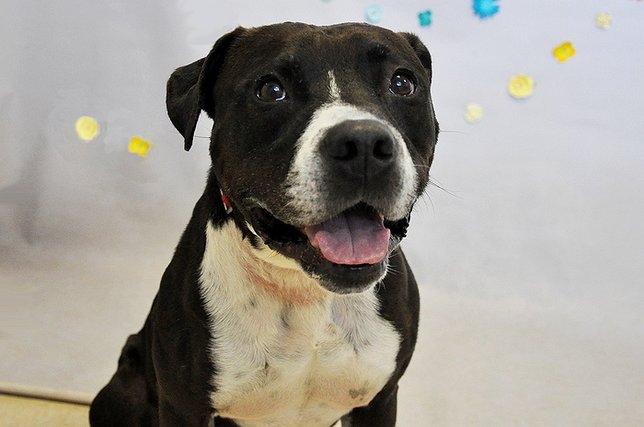Prince has been dealt a bad hand in life. Adopted at 6 weeks old, poor Prince has been in and out of the TOH Animal Shelter before. Now at 6 years old, Prince finds himself homeless once again, desperate for a true forever home. Prince is breaking the hearts of staff and volunteers; he's such a good boy and truly deserves someone who will love and respect him FOREVER. Prince likes other dogs, and is friendly with people. He will make a GREAT companion, and one that will be so appreciative! If you are interested in Prince, please call for more information: 516-785-5220 or come visit him at 3320 Beltagh Avenue, Wantagh NY 11793.

Scotty is all kinds of awesome. This beyond handsome 4 1/2 year old boy originally came into the shelter in 2015 as a stray. He was reclaimed by his owner, only to turn up again as a stray in November 2016. Poor Scotty deserves a loving home, and a family who is going to love and cherish him forever. Scotty is playful with other dogs and loving with people. He is sure to make an incredible companion to whoever is lucky enough to adopt him. Please call for more information: 516-785-5220 or come visit us at: 3320 Beltagh Avenue, Wantagh NY 11793.
For those of you who have a furry friend, check out this important safety tips for the current summer temps:
Pets should be kept indoors during times of excessive heat. When left outside, pets should have proper protection from the beating sun's rays and plenty of fresh, cool water. It is important to note that doghouses do not provide protection from heat, especially if they are exposed to the sun. In fact, they can intensify temperatures that are already hot. So please keep your pets cool and indoors.
The following are tips to protect pets from excessive heat exposure:
- Do not leave your pet in a parked car, not even if you feel that the errand will be of a short duration. Temperatures in vehicles can soar to dangerous levels in no time at all.
- Make sure your pet has shade and plenty of cool water. Putting ice in your dog's water is a refreshing treat. A number of products can help to keep your pet cool, such as cooling collars, cooling mats, bandanas, jackets, and misters.
- Limit exercise. Dogs should be walked in the early morning and late in the evening. Avoid strenuous play such as running and playing fetch. It is important to keep in mind that dogs should not be walked on concrete or asphalt during excessive heat. Hot pavement can burn and blister a dog's paws. If it's too hot for our bare feet, it is too hot for our pet's paws.
- Leaving a dog outdoors in excessive heat for prolonged periods of time can be life threatening. Pets, like their human counterparts can suffer from heatstroke. Dogs do not sweat like humans. They sweat through their nose and footpads and release heat by panting. If they are unable to effectively discharge body heat, the body temperature begins to rise. A dog's normal body temperature is between 100.5 degrees F and 102.5 degrees F. If, at any time, a dog's body temperature rises or falls beyond these levels, a veterinarian should be consulted.
- When a dog's body temperature rises to 104 degrees, it is considered an emergency situation, and once it reaches 106 degrees, there may be irreparable damage to organs which may result in death. Signs of heat stroke include: excessive panting, glazed eyes, rapid heartbeat, restlessness, excessive thirst, lethargy, fever, dizziness, lack of coordination, excess salivation, vomiting, a deep red or purple tongue and unconsciousness.
If you suspect that your dog is suffering from heat stroke, even if you are unsure, the following steps should immediately be taken:
- Move the dog out of the heat and sun.
- Place cool (not cold) wet cloths over most of the body, focusing on the head and footpads. Placing cold or ice water on a dog suffering from heat stroke can make blood vessels constrict, causing the internal temperature to continue to rise.
-
Offer the dog cool water (not cold). However, do not force him to drink.
- Even if the dog seems better, call the vet. Internal organ damage may not be apparent to the untrained eye.
- Please note there are certain breeds, such as pugs and bulldogs, that are extra sensitive to heat. Overweight dogs of all breeds are also at high risk when temperatures soar. Take special care to make sure that such dogs are protected during all










